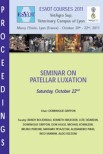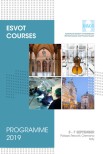Objective
To compare in vitro strength and failure characteristics of a tendon implant against a 3 loop pulley suture pattern for equine superficial digital flexor tendon (SDFT) laceration repair.
Study Design
Experimental.
Study Population
Cadaveric equine forelimb SDFT (n = 16).
Methods
One tendon of each of 8 pair of SDFT was randomly selected for repair with either the 3-loop pulley (3LP) suture pattern using 2 polydioxanone or with 4 stainless steel suture and anchor implants (SA). Ultimate load to failure, mode of failure, gap at failure, and load to 2 mm gap were obtained using a materials testing system synchronized with a high-speed camera. Statistical evaluation was made using Student's t-test; significance was set at P ≤ .05.
Results
The 3LP failed at a significantly (P = .0001) greater load (363.5 ± 83.7 N) than SA (132.4 ± 26.8 N), but the load to a 2 mm gap (3LP = 164.9 ± 67.7 N, SA = 114.5 ± 21.5 N) was not significantly different (P = .09). Failure mode was by suture pull out and anchor pull out respectively. The gap at failure was significantly larger in the 3LP than in SA repair (P = .000005).
Conclusions
Both the SA repair and the 3LP resisted similar tension to 2 mm gap. However, the ultimate load to failure of the SA repair was only 36% that of the 3LP repair.









